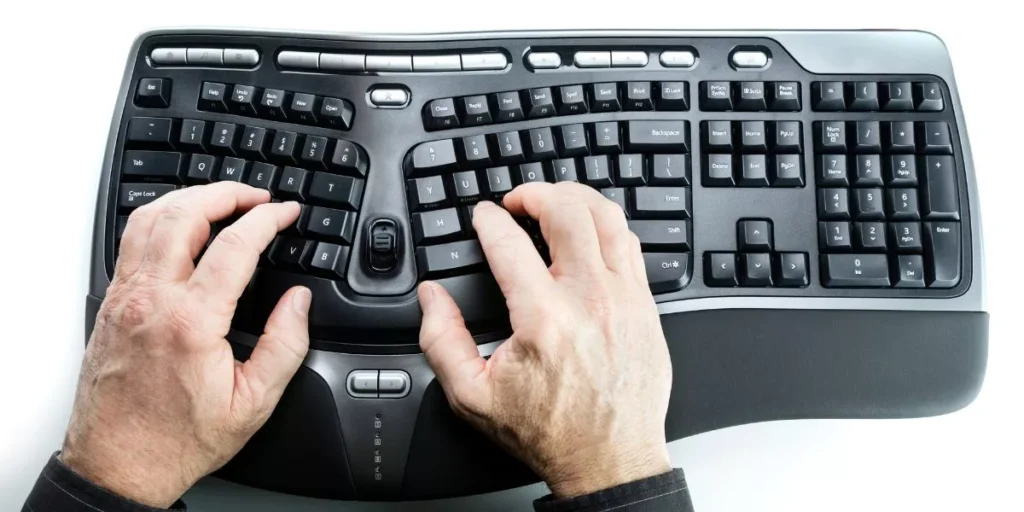
If you find yourself typing away at your desk for hours on end, it’s crucial to consider the impact of your keyboard on your comfort and productivity. The right ergonomic keyboard can make a world of difference in how you feel at the end of a workday. But with so many options on the market, how do you know which one will truly suit your needs best? Let’s explore the key features and top picks that could revolutionize your typing experience and elevate your work performance.
Top Picks for Ergonomic Keyboards
When selecting an ergonomic keyboard, prioritize comfort and functionality to enhance your productivity throughout the workday. Look for keyboards that provide proper wrist support to prevent strain and fatigue. One top pick is the Microsoft Sculpt Ergonomic Keyboard, known for its split design that promotes a more natural hand position. This keyboard also includes a cushioned palm rest to support your wrists during long typing sessions.
Another excellent choice is the Logitech Ergo K860, featuring a curved design that encourages a more relaxed posture and reduces muscle strain. Its adjustable palm lift offers customization for a personalized fit, ensuring maximum comfort while typing. Additionally, the K860’s pillowed wrist rest provides soft support to keep your wrists in a neutral position.
Consider the Kinesis Advantage2 as well, with its unique contoured design that reduces hand and finger movement for a more ergonomic typing experience. This keyboard’s concave key wells and integrated palm supports encourage a more natural hand position, minimizing discomfort and increasing productivity.
Key Features to Consider
Enhancing your typing experience begins with carefully considering the key features of an ergonomic keyboard. When selecting the best ergonomic keyboard for your needs, pay close attention to the design features that promote comfort and efficiency. Look for keyboards with a split layout that allows your wrists to remain in a more natural position, reducing strain. Additionally, keyboards with adjustable tenting or negative tilt settings can help minimize wrist extension, providing a more comfortable typing experience.
Another essential feature to consider is key shape and spacing. Opt for a keyboard with keys that are slightly concave and separated to match the natural curvature of your fingers, reducing the risk of mistyping. Backlit keys can also be beneficial, especially in dimly lit office environments, enhancing visibility and reducing eye strain.
Lastly, consider the connectivity options available. Whether you prefer a wired or wireless connection, ensure the keyboard is compatible with your devices to streamline your workflow. By focusing on these key features, you can find an ergonomic keyboard that promotes comfort and productivity throughout your workday.
Budget-Friendly Options
Considering your budget constraints, exploring ergonomic keyboards that offer both comfort and affordability can be a practical approach as you navigate the options available. While some ergonomic keyboards can be quite expensive, there are budget-friendly options that still provide ergonomic benefits.
One cost-effective option to consider is the Microsoft Ergonomic Keyboard. This keyboard features a split design and a cushioned palm rest for improved comfort during long typing sessions. Another affordable choice is the Logitech K350, which offers a wave-like design to support a more natural hand position.
If you’re looking for a more compact and budget-friendly option, the Perixx Periboard-512 may be suitable for you. This keyboard is smaller in size but still provides ergonomic benefits with its integrated palm rest and adjustable typing angle.
Ergonomic Keyboard Buying Guide
To make an informed decision when purchasing an ergonomic keyboard, prioritize understanding your specific ergonomic needs and preferences. Consider factors like keyboard layout, key shape, and split design. Evaluate if you need a curved design to reduce wrist strain or a split keyboard to promote a more natural hand position. Wrist rests can also provide additional comfort during long typing sessions.
Assess the keyboard size to ensure it fits your workspace and allows for proper arm positioning. Look for adjustable tilt options to customize the keyboard angle for optimal wrist alignment. Backlit keys can enhance visibility in dimly lit environments. Wireless connectivity offers flexibility in positioning your keyboard for improved comfort.
Test out different ergonomic keyboards if possible to find one that suits your typing style and preferences. Prioritizing your ergonomic needs ensures that you select a keyboard that promotes comfort and reduces the risk of strain or injury during long work hours.
Trending Products
























